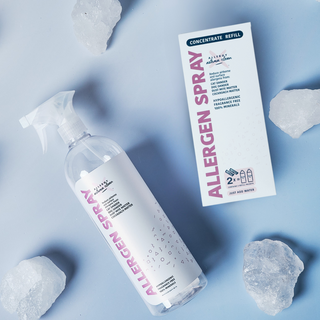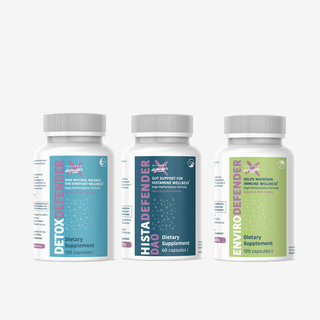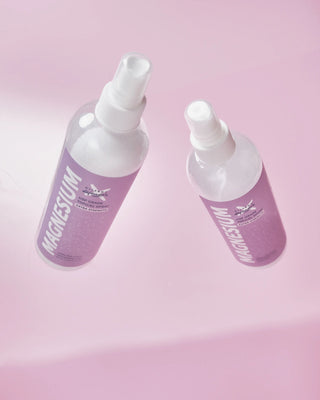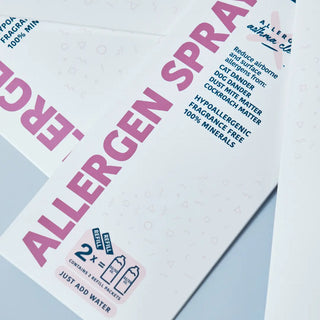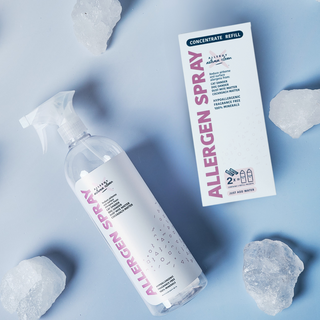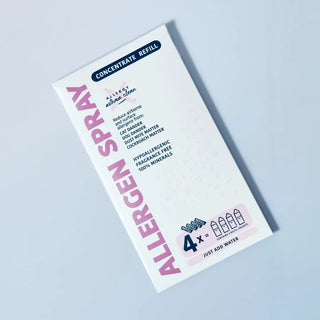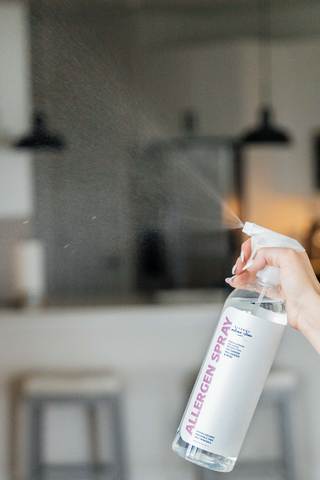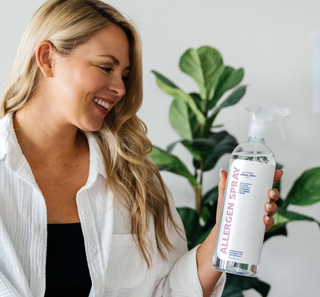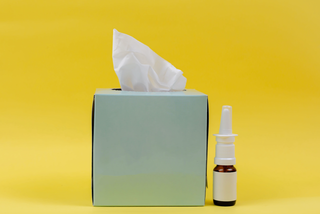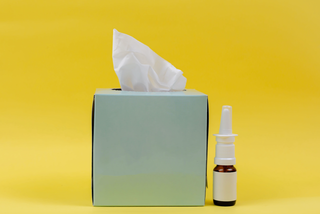Got pets? Got an air purfier? You could be all set for a calmer body and home environment. Possibly.
Pet allergies are caused by the proteins found in pet skin cells, urine, and saliva. When pets shed dander, these proteins can become airborne and trigger allergic reactions. For asthma patients, pet dander can exacerbate symptoms, leading to frequent asthma attacks (respiratory distress). This is where air purifiers come in handy—they help filter out these allergens, making the air in your home cleaner thereby easier to breathe.
The Science Behind Pet Allergies
Pet allergies are a common issue affecting millions of individuals worldwide. The proteins responsible for these allergies are often found in pet dander, saliva, and urine. When these tiny particles become airborne, they can easily be inhaled, leading to an immune response that causes symptoms such as sneezing, itching, and respiratory difficulties. Understanding the science behind pet allergies can help you
Asthma and Allergens: A Double Threat
For individuals with asthma, allergens pose a dual challenge. Pet dander is a known asthma trigger and can lead to increased asthma attacks, characterized by difficulty breathing, wheezing, and chest tightness. This is known as respiratory distress. The presence of pet allergens in the home can make asthma management more complex, necessitating the use of medications and interventions like air purifiers to reduce exposure and improve quality of life.
The Role of Air Purifiers
Mechanism of Action
Air purifiers operate by drawing in air from the surrounding environment and passing it through a series of filters. These filters, often including HEPA and activated carbon, capture and trap airborne particles such as dust, pollen, and pet dander. The purified air is then circulated back into the room, creating a cleaner and healthier indoor atmosphere. This process not only reduces allergens but also helps in eliminating odors and other pollutants.
Types of Air Purifiers
There are several types of air purifiers available, each with its unique features and benefits. HEPA
Long-term Health Benefits
Using an air purifier consistently can have long-term health benefits beyond immediate symptom relief. By maintaining cleaner air, purifiers can reduce the risk of developing respiratory conditions and minimize the impact of existing allergies and asthma.
Benefits of Air Purifiers for Allergy and Asthma Sufferers
- Reduces Allergens: Air purifiers with HEPA filters can capture up to 99.97% of particles as small as 0.3 microns, and this includes pet dander.
- Improves Air Quality: By removing allergens, air purifiers improve overall air quality, making it easier to breathe.
- Decreases Asthma Triggers: Cleaner air means fewer asthma triggers, reducing the frequency and severity of asthma attacks. For asthma sufferers, this can translate to fewer medications and a better quality of life.
- Promotes Better Sleep: With fewer allergens, you're less likely to experience nighttime symptoms, leading to better sleep quality. Restful sleep is crucial for health and can be significantly improved by using an air purifier in your bedroom.
Choosing the Best Air Purifier for Pet Allergies
When selecting an air purifier for pet allergies, there are several factors to consider:
HEPA Filters
HEPA filters are essential for anyone dealing with pet allergies and asthma. They are capable of trapping tiny particles, including pet dander, ensuring that the air you breathe is cleaner and safer.
HEPA filters are considered the gold standard in air purification due to their high efficiency in trapping particles. The use of HEPA filters in air purifiers ensures that the air in your home is as clean as possible, providing relief from allergy symptoms.
How HEPA Filters Work
HEPA filters work by forcing air through a fine mesh that traps harmful particles. This process involves a combination of diffusion, interception, and impaction, effectively capturing particles that are too small to be seen with the naked eye. The result is significantly cleaner air.
Regular Maintenance of HEPA Filters
To maintain the efficiency of HEPA filters, regular replacement is necessary. Over time, these filters can become clogged with trapped particles, reducing their effectiveness. Most manufacturers recommend replacing HEPA filters every 6 to 12 months, depending on usage and environmental factors such as how many pets you have in your home.
What About Coverage Area for Air Purifiers?
Choose an air purifier that matches the size of the room where it will be placed. Larger rooms will require a purifier with a higher CADR (Clean Air Delivery Rate) to effectively filter the air. Be sure to measure the room before purchasing so you get the right purifier for your needs.
Understanding CADR Ratings
The CADR is a crucial factor in determining the effectiveness of an air purifier. CADR ratings indicate how quickly and efficiently a purifier can clean the air in a specific room size. Higher CADR ratings are essential for larger rooms, ensuring that the purifier can handle the volume of air and remove allergens effectively.
Matching Purifiers to Room Size
Selecting an air purifier with the appropriate coverage area is vital for optimal performance. Manufacturers typically provide guidelines on the maximum room size for each model. Choose a purifier that can handle the square footage of the intended space, ensuring that all areas receive adequate filtration.
Impact of Room Layout on Purifier Performance
The layout and furniture placement in a room can impact an air purifier's performance. Who knew? Obstructions such as walls and large furniture pieces can interfere with airflow, reducing the purifier's efficiency. Positioning the purifier in an open area with unobstructed airflow will enhance its ability to clean the air effectively.
Noise Level
For many individuals, noise levels are a significant consideration when choosing an air purifier. Loud purifiers can be disruptive, particularly in bedrooms and workspaces. Models with quiet operation modes provide effective air purification without disturbing sleep or concentration, making them ideal for sensitive environments.
Comparing Noise Levels Across Models
When evaluating air purifiers, compare the noise levels of different models. Manufacturers often provide decibel (dB) ratings, which can help in assessing the relative quietness of a purifier. Opting for a model with a lower decibel rating can ensure a more peaceful environment.
Balancing Noise and Performance
While quiet operation is desirable, it's essential not to sacrifice performance for silence. Some high-performance purifiers may produce more noise due to powerful fans and motors. Finding a balance between noise level and air purification efficiency is key to selecting the right model for your needs.
Additional Features
Some air purifiers come with additional features such as air quality sensors, auto mode, and smart connectivity. These can enhance the convenience and efficiency of the device.
Air Quality Sensors
Air quality sensors are a valuable feature in modern air purifiers. These sensors detect the level of pollutants in the air and adjust the purifier's settings accordingly. This automatic adjustment ensures that the purifier operates at optimal levels, providing efficient air cleaning without manual intervention.
Smart Connectivity
Smart connectivity features allow air purifiers to be controlled via smartphone apps or integrated with smart home systems. This enables remote monitoring and control, providing users with the flexibility to adjust settings and receive air quality updates from anywhere. Smart features enhance user convenience and ensure that the purifier is always operating efficiently.
Energy Efficiency and Eco Modes
Many air purifiers come with energy-efficient features, such as eco modes that reduce power consumption when air quality is good. These modes help in lowering electricity costs. Choosing an energy-efficient model can provide long-term savings while maintaining clean air.
Top Air Purifiers for Pet Allergies
Here are some of the best air purifiers for pet allergies that have received positive reviews from users and experts alike:
1. Dyson Pure Cool TP04
The Dyson Pure Cool TP04 is a powerful air purifier and fan combined. It features a sealed HEPA filter to capture allergens and pollutants.
The Dyson Pure Cool TP04 stands out for its dual functionality as both an air purifier and a fan. Its sealed HEPA filter system captures 99.97% of allergens and pollutants, while the activated carbon filter removes odors and gases. The TP04 also features a 360-degree oscillation to distribute purified air throughout the room evenly.
User Experience and Benefits
Users of the Dyson Pure Cool TP04 report significant improvements in air quality and allergy symptoms. The real-time air quality display provides valuable insights into indoor conditions, allowing for timely adjustments. Its sleek design and smart features make it a popular choice among tech-savvy consumers seeking both style and functionality.
Maintenance and Care Tips
To maintain the performance of the Dyson Pure Cool TP04, regular maintenance is necessary. The HEPA and activated carbon filters should be replaced according to the manufacturer's guidelines. Keeping the device clean and free from dust will ensure optimal performance and longevity.
2. Coway AP-1512HH Mighty
The Coway AP-1512HH Mighty is known for its compact design and powerful performance. Its four-stage filtration system includes a pre-filter, deodorization filter, true HEPA filter, and vital ionizer, effectively removing a wide range of pollutants. The Eco mode is a standout feature, offering energy savings without compromising air quality.
Performance and User Feedback
Users praise the Coway AP-1512HH Mighty for its ability to significantly reduce allergens and improve indoor air quality. Its compact size makes it suitable for smaller spaces, while its quiet operation is ideal for bedrooms and offices. The purifier's intuitive controls and performance indicators enhance user experience and satisfaction.
Maintenance Guidelines
To keep the Coway AP-1512HH Mighty in top condition, regular maintenance of filters is essential. The pre-filter should be cleaned periodically, while the other filters require replacement as per the manufacturer's recommendations. Regular cleaning and maintenance will ensure the purifier continues to deliver optimal performance.
3. LEVOIT Core 300
The LEVOIT Core 300 is a budget-friendly option with impressive performance. It features a HEPA filter and a pre-filter that captures larger particles. The Core 300 is quiet and compact, making it ideal for bedrooms and small living spaces.
Features and Specs
The LEVOIT Core 300 is a cost-effective air purifier that doesn't compromise on performance. It includes a pre-filter, true HEPA filter, and high-efficiency activated carbon filter, effectively capturing allergens, odors, and pollutants. Its compact design allows for easy placement in small rooms, and the QuietKEAP technology ensures minimal noise during operation.
User Experience and Benefits
Users of the LEVOIT Core 300 appreciate its affordability and high performance in removing allergens. Its quiet operation and night light feature make it a popular choice for bedrooms. The purifier's simple controls and filter replacement indicators add to its user-friendly design.
Tips for Optimal Use and Maintenance
To maximize the LEVOIT Core 300's lifespan and efficiency, regularly replace the filters. The pre-filter should be cleaned frequently to maintain airflow, and the other filters should be replaced according to usage and home or office conditions. Keeping the unit clean will ensure it continues to deliver clean air effectively.
4. Honeywell HPA300
The Honeywell HPA300 is designed for large spaces, offering a high CADR rating that efficiently handles significant volumes of air. Its true HEPA filter captures up to 99.97% of particles, while the activated carbon filter helps in reducing odors and VOCs. The HPA300's straightforward controls and timer function add to its user-friendly design.
Performance and User Satisfaction
Users of the Honeywell HPA300 report notable improvements in air quality, especially in larger rooms. Its powerful filtration system effectively reduces allergens and enhances indoor comfort. The purifier's intuitive interface and robust performance make it a favored choice for those seeking reliable air purification in expansive areas.
Maintenance and Care Recommendations
To ensure the Honeywell HPA300 operates at peak efficiency, regular filter maintenance is necessary. The true HEPA and carbon filters should be replaced as specified by the manufacturer. Regular cleaning of the unit and ensuring unobstructed airflow will extend its lifespan and maintain performance.
The Downside of Air Purifiers Compared to Allergen Sprays
For people seeking relief from pet allergens, air purifiers are often considered a primary solution. But these devices come with limitations that allergen sprays can address more effectively. Let’s explore why air purifiers may not be the perfect answer for allergen control and how allergen sprays offer an appealing alternative for cleaner, allergen-free environments.
1. Coverage Area Limitations
Most air purifiers are designed to work in a single room or a limited square footage, meaning you need multiple units to cover your entire home. In contrast,
2. High Maintenance and Replacement Costs
Air purifiers require regular filter replacements to remain effective. HEPA filters, commonly used in air purifiers, can be costly, and neglecting filter maintenance can reduce air quality or even worsen it as filters become saturated. Over time, the expenses add up, making air purifiers an ongoing investment. Allergen Spray, on the other hand, generally requires a thorough application and minimal reapplication, making it a more affordable and hassle-free option.
3. Inability to Address Surface Allergens
Air purifiers are designed to filter allergens floating in the air, but many allergens, such as pet dander, cling to surfaces like upholstery, bedding, and carpets. These surfaces can become allergen hotspots, continually triggering symptoms even in the presence of an air purifier. Allergy Defender's Allergen Spray targets these areas directly, neutralizing allergens at their source for a comprehensive approach for allergen relief.
4. No Instant Relief
Air purifiers work by drawing in air, trapping particulates, and recirculating filtered air. However, this process isn’t instant, and it may take hours to noticeably reduce allergens in a room. In contrast, an allergen spray provides instant relief by directly addressing allergens upon application. Allergen Spray’s lab-tested, mineral-based formula allows users to create an allergen-free environment quickly, which can be especially beneficial for those with heightened sensitivities or asthma.
5. Energy Consumption and Noise Concerns
Air purifiers require electricity to operate, making them an additional energy expense. Many models also generate noise, which can be a nuisance, especially in quiet spaces like bedrooms or home offices. Allergen sprays offer a silent, energy-free alternative, allowing users to achieve allergen control without any disruptions to their environment.
6. Environmental and Health Concerns with Ozone-Producing Purifiers
Some air purifiers, particularly ionic purifiers, emit ozone as a byproduct. While these purifiers are marketed as being effective for air purification, the presence of ozone can be harmful, especially for individuals with respiratory issues. Allergen Spray uses a safe, mineral-based formula that produces zero harmful byproducts, making it a safer, eco-friendly choice for allergen management.
For Comprehensive Allergen Relief use a Purifier AND Allergen Spray
While air purifiers can play a role in reducing airborne allergens, they fall short in several critical areas that allergen sprays address effectively. Allergen sprays provide a flexible, targeted, and energy-efficient solution that neutralizes allergens instantly on surfaces and offers consistent, comprehensive protection. For individuals seeking a more effective, hassle-free approach to managing allergens, a well-formulated allergen spray like Allergy Defender's Allergen Spray is a natural choice for a healthier, allergen-controlled environment.
Final Thoughts on Creating a Pet-Friendly Environment
Living with allergies and asthma doesn't mean you have to give up your pets. By incorporating air purifiers and Allergen Spray into your home, you create a more pet-friendly environment where you can co-exist comfortably. This allows you to enjoy the companionship of your furry friends without compromising your health. And to that we say, Amen!

